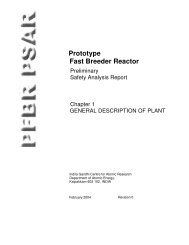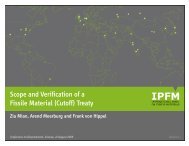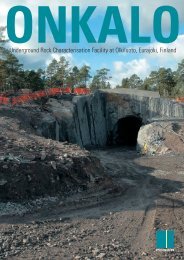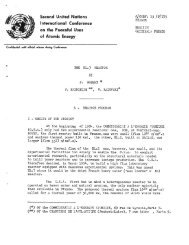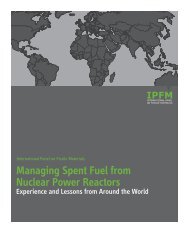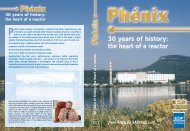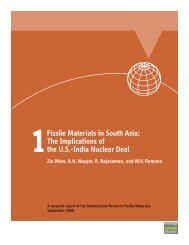Nuclear Proliferation TechnologyTrends Analysis - International ...
Nuclear Proliferation TechnologyTrends Analysis - International ...
Nuclear Proliferation TechnologyTrends Analysis - International ...
You also want an ePaper? Increase the reach of your titles
YUMPU automatically turns print PDFs into web optimized ePapers that Google loves.
PNNL -14480<br />
Figure 2 Sub-critical gas centrifuge components 16<br />
Because of the corrosive nature of UF 6, all components that come in direct contact with it<br />
must be fabricated from or lined with corrosion-resistant materials.<br />
The power supply is a key component of the gas centrifuge process. The power supply<br />
(frequency converter) must accept alternating current input at the 50 or 60 Hz line<br />
frequency of the electric power grid and provide an ac output at a much higher frequency<br />
(typically 600 Hz or more). The high frequency output from the frequency converter is<br />
fed to the high-speed gas centrifuge drive motors (the speed of an ac motor is<br />
proportional to the frequency of the supplied current). The centrifuge power supplies<br />
must operate at high efficiency, provide low harmonic distortion, and ensure precise<br />
control of the output frequency. 16<br />
A variety of materials have been used for centrifuge construction. The three most<br />
common (in order of increasing tensile strength) are high tensile strength aluminum<br />
alloys, maraging steel, and carbon fiber/resin. Specific design issues are discussed in<br />
Section 3.2.2.1.<br />
Table 5 identifies specific technologies used in centrifuge enrichment, describes the<br />
technology level needed for successful use, and lists critical materials and unique<br />
equipment.<br />
16 Scientific American, Vol., No. 2, August 1978, Pg 29<br />
14



